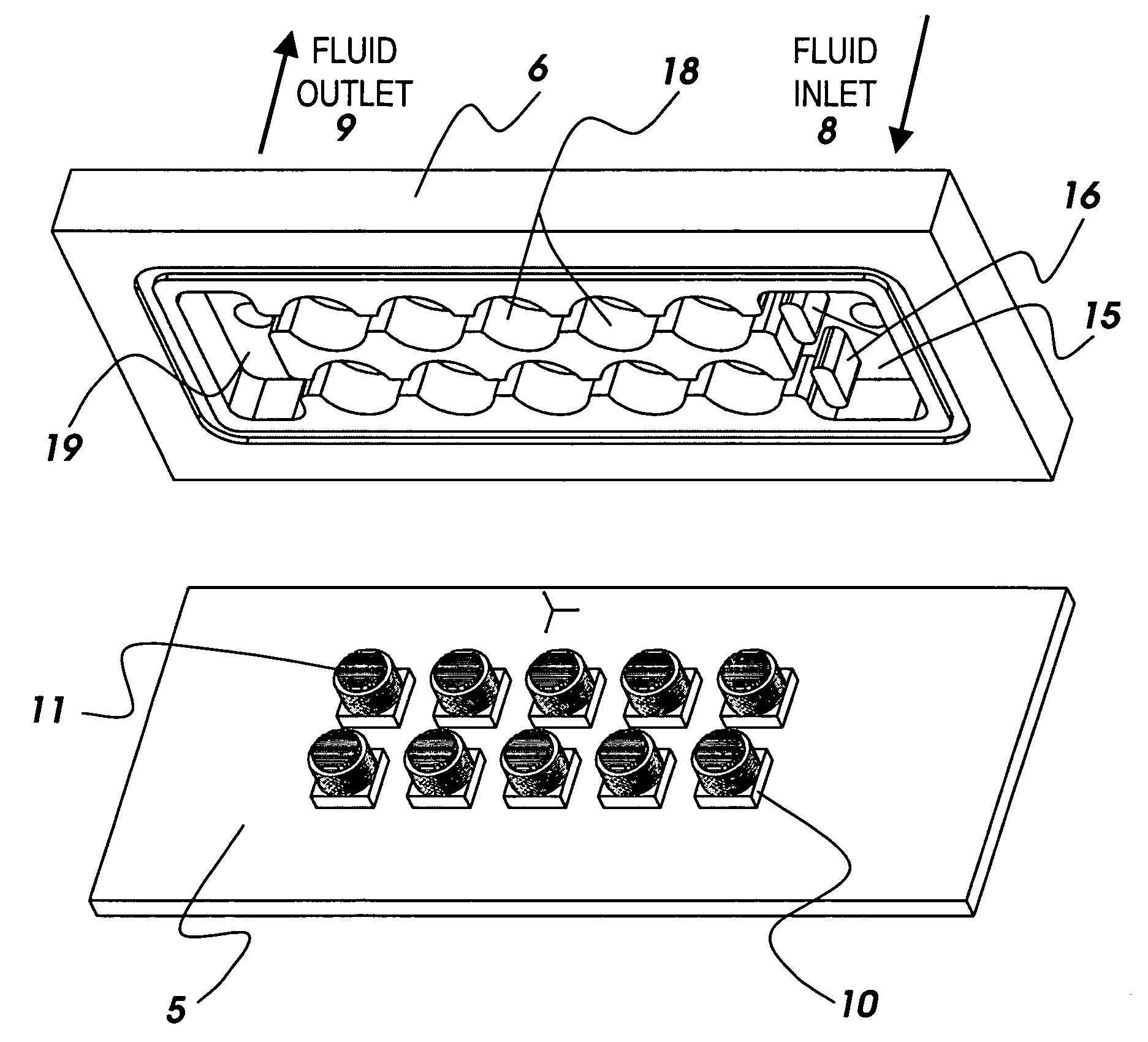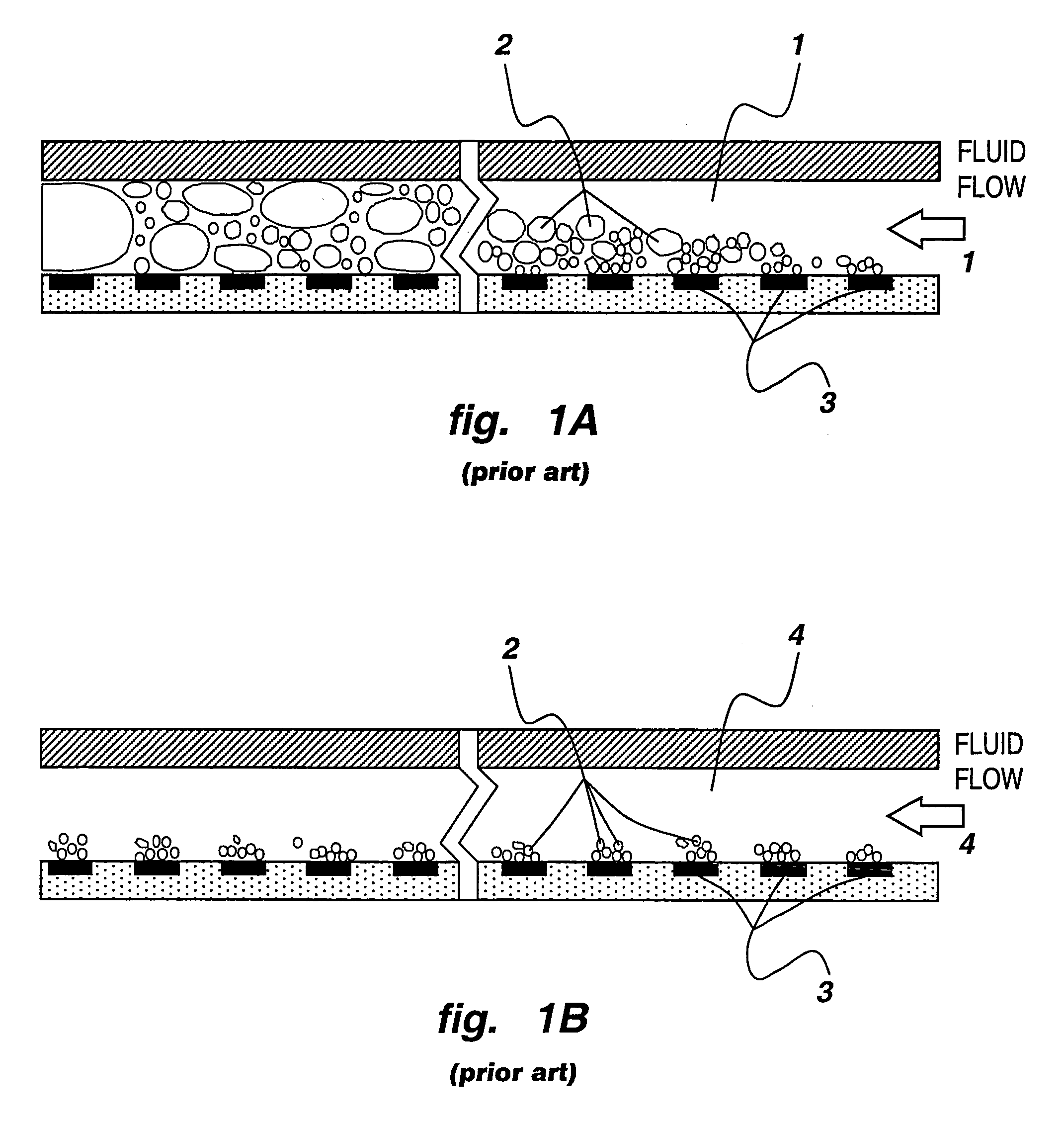Apparatus for heat transfer and critical heat flux enhancement
a technology of critical heat flux and apparatus, applied in lighting and heating apparatus, semiconductor/solid-state device details, laminated elements, etc., can solve the problems of reducing the efficiency of heat removal, so as to increase the liquid velocity and increase the subcooling effect. , the effect of increasing the flow ra
- Summary
- Abstract
- Description
- Claims
- Application Information
AI Technical Summary
Benefits of technology
Problems solved by technology
Method used
Image
Examples
Embodiment Construction
[0034]Heat dissipating devices 10 are embedded in the base plate 5 of the module illustrated in FIGS. 2A and 2B, and a cover plate 6 is used to introduce a liquid coolant 7 through an inlet port 8 into the module, to control coolant path within the module cavity, as well as to expel the coolant from the module through an outlet port 9. Different inlet and outlet configurations can be used with this module as illustrated in FIGS. 3A–3C. The coolant is conditioned by a flow loop external to the module (conditioning loop is not part of the present invention) that returns the coolant to the module at the appropriate temperature, pressure and flow rate.
[0035]Inside the module, the liquid extracts the heat from the devices 10 by turning partially into vapor through boiling. The liquid is supplied at the module inlet 8 in a subcooled state, i.e., at a temperature much lower than the liquid's boiling temperature corresponding to the inlet liquid pressure. This results in subcooled nucleate ...
PUM
 Login to View More
Login to View More Abstract
Description
Claims
Application Information
 Login to View More
Login to View More - R&D
- Intellectual Property
- Life Sciences
- Materials
- Tech Scout
- Unparalleled Data Quality
- Higher Quality Content
- 60% Fewer Hallucinations
Browse by: Latest US Patents, China's latest patents, Technical Efficacy Thesaurus, Application Domain, Technology Topic, Popular Technical Reports.
© 2025 PatSnap. All rights reserved.Legal|Privacy policy|Modern Slavery Act Transparency Statement|Sitemap|About US| Contact US: help@patsnap.com



